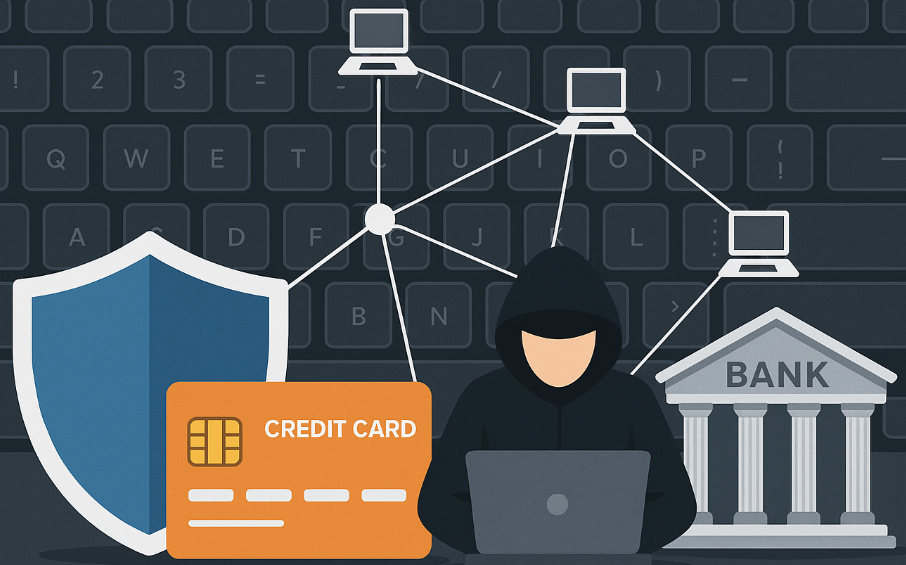Payment fraud not only results in direct financial losses but also erodes customer trust, imposes regulatory burdens, and affects the reputational standing of financial institutions.
The Rise of Payment Fraud
Payment fraud encompasses various illicit activities aimed at unlawfully acquiring funds through payment systems. These include credit card fraud, phishing scams, account takeovers, synthetic identity fraud, and business email compromise (BEC). With increased digitization, fraudsters exploit both technological vulnerabilities and human error, often targeting weak security protocols or unsuspecting individuals.
According to a report by Nilson Report, global card fraud losses reached $28.58 billion in 2020, and are projected to exceed $49 billion by 2030. The United States alone accounted for nearly 34% of global card fraud losses, despite representing only 22% of global card volume. In the European Union, the European Central Bank reported that payment card fraud involving cards issued within SEPA (Single Euro Payments Area) reached €1.87 billion in 2021, with Card-Not-Present (CNP) fraud accounting for 84% of the total.
Impact on Banks and PSPs
1. Financial Losses:
The most immediate impact of payment fraud on banks and PSPs is the direct financial loss. These losses are not limited to the stolen funds but also include operational costs associated with investigating fraud cases, reimbursing customers, and handling legal actions.
2. Reputational Damage:
Reputation is critical in the financial industry. A single major fraud incident can shake customer confidence and result in long-term loss of clientele. In the age of social media and instant communication, negative news spreads rapidly, making reputational damage even more severe.
3. Regulatory and Compliance Burdens:
Fraud incidents often lead to increased regulatory scrutiny. Financial institutions are required to adhere to strict Anti-Money Laundering (AML) and Know Your Customer (KYC) regulations. Failure to comply can result in hefty fines. For example, in 2020, Westpac, one of Australia’s largest banks, was fined AUD 1.3 billion (approx. USD 920 million) for failing to report international transactions that could be linked to criminal activities, including fraud.
4. Increased Operational Costs:
To combat fraud, banks and PSPs must invest heavily in cybersecurity infrastructure, fraud detection systems, and staff training. These ongoing costs can significantly impact profit margins, especially for smaller institutions and fintech startups.
Common Types of Payment Fraud
- Phishing and Social Engineering: Fraudsters trick users into revealing sensitive information via fake emails, websites, or phone calls.
- Card Not Present (CNP) Fraud: Occurs during online transactions when the cardholder does not physically present the card.
- Account Takeover: Hackers gain unauthorized access to a user’s bank account, often through compromised credentials.
- Business Email Compromise (BEC): Criminals impersonate executives or vendors to trick employees into initiating wire transfers.
Prevention and Mitigation Measures
Despite the evolving nature of fraud, several strategies can be employed to mitigate the risks:
1. Advanced Authentication:
Multi-Factor Authentication (MFA) significantly reduces unauthorized access. Biometric verification, token-based systems, and behavioral biometrics add additional layers of security.
2. Real-Time Fraud Detection Systems:
Banks and PSPs are increasingly deploying Artificial Intelligence (AI) and Machine Learning (ML) to monitor transaction patterns and flag anomalies in real-time.
3. Tokenization and Encryption:
Sensitive cardholder data is replaced with tokens that are useless if intercepted. End-to-end encryption ensures that data is secure during transmission.
4. Consumer Education:
Educating customers about phishing schemes, safe banking practices, and reporting suspicious activity can significantly reduce successful fraud attempts.
5. Regulatory Collaboration:
Working with regulators and industry consortia like the European Payments Council (EPC) or the Payment Card Industry Security Standards Council (PCI SSC) helps align efforts against fraud on a larger scale.
Conclusion
Payment fraud remains a significant threat to the financial services ecosystem. With cybercriminals continually adapting their methods, banks and PSPs must remain vigilant, agile, and proactive. Through a combination of advanced technology, consumer awareness, and regulatory alignment, the industry can not only mitigate fraud risks but also foster a safer, more trustworthy payment environment for all stakeholders. As global digital transactions continue to rise, so does the urgency to act - before the cost becomes even more staggering.








